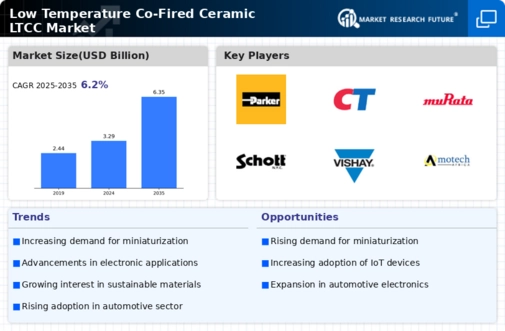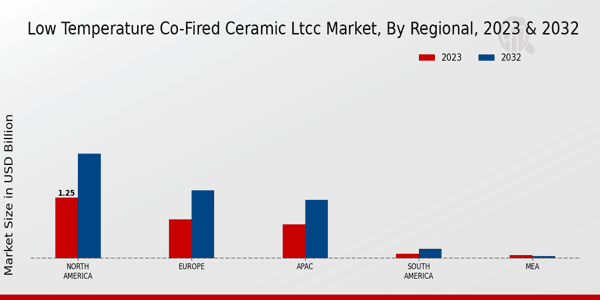The Global Low temperature Co-Fired Ceramic (LTCC) Market represents a dynamic segment characterized by rapid advancements in materials technology and increasing demand across various sectors such as telecommunications, automotive, and consumer electronics.
As industries strive for miniaturization and enhanced performance capabilities, LTCC technology has emerged as a preferred choice due to its unique properties, including high thermal stability, excellent electrical insulation, and compatibility with various circuit designs.
The competitive landscape of this market highlights significant players who not only innovate but also enhance their product offerings by aligning with the changing technological needs and requirements of their customers. This environment fosters strategic partnerships, research and development initiatives, and investment in production capabilities aimed at maintaining a competitive edge.
Parker Hannifin stands out in the Low temperature Co-Fired Ceramic LTCC Market with its strong focus on innovation and comprehensive solutions tailored to meet specific industry needs. The company leverages its extensive experience in engineering and technology to develop advanced LTCC components that enhance the performance of electronic systems.
Parker Hannifin's robust presence in this market is underscored by its commitment to quality, reliability, and customer satisfaction, making it a preferred choice among manufacturers requiring high-performance materials.
Additionally, the company's global reach ensures a consistent supply chain, allowing it to respond effectively to market demands and customer inquiries, further solidifying its position as a leading player in the LTCC segment.
CeramTec is another prominent contributor to the Global Low temperature Co-Fired Ceramic LTCC Market, recognized for its specialization in high-performance ceramic materials and innovative solutions. The company boasts a diverse portfolio of LTCC products that are engineered to meet stringent industry standards and specifications, catering to applications that demand exceptional performance.
CeramTec's strengths lie in its dedicated research and development efforts, which enable the continuous improvement of its product offerings and adaptation to emerging market trends.
With a focus on quality and technological advancement, CeramTec has established a reputation for excellence, ensuring customer confidence in its ability to deliver cutting-edge LTCC solutions that meet the evolving demands of the electronics industry.

























Leave a Comment